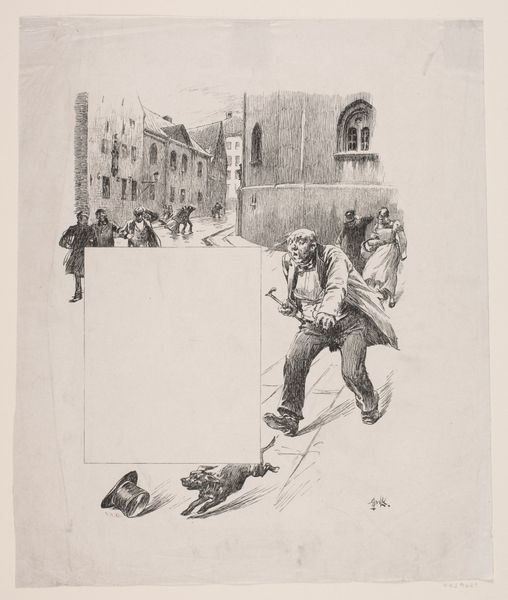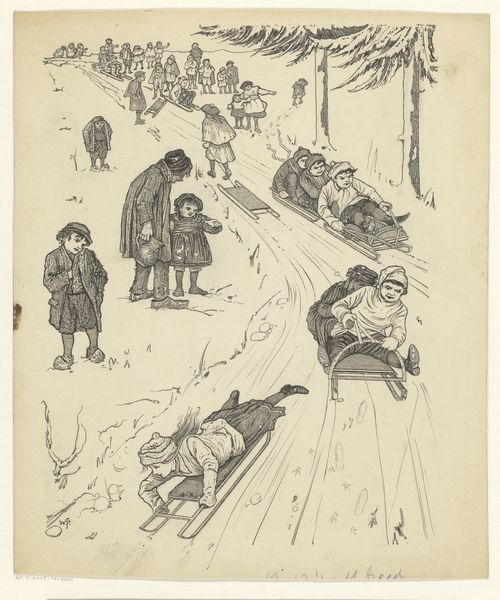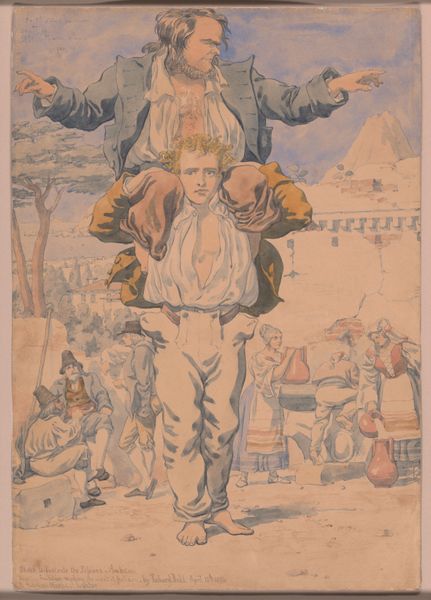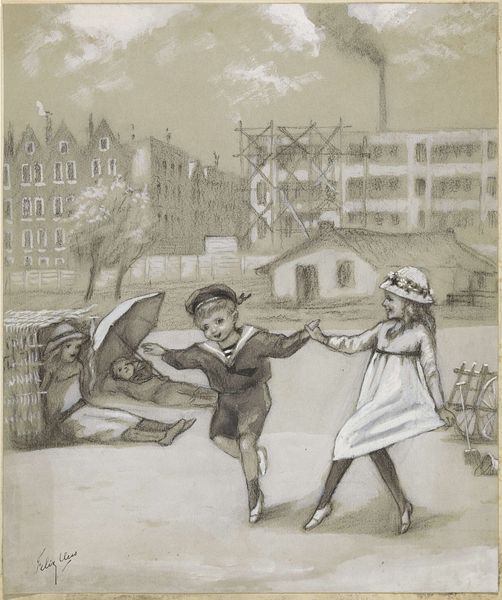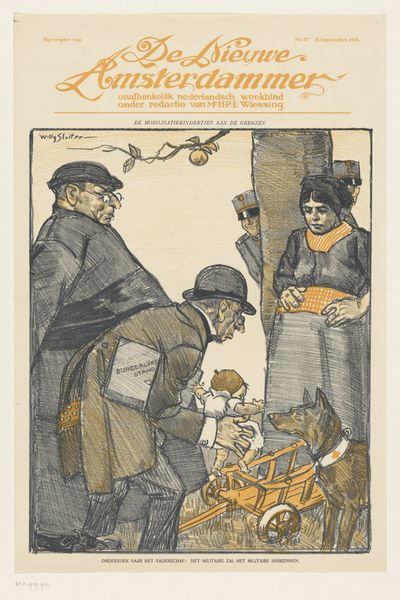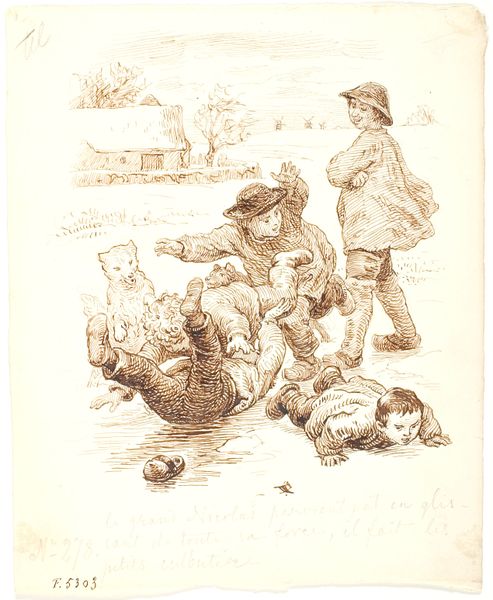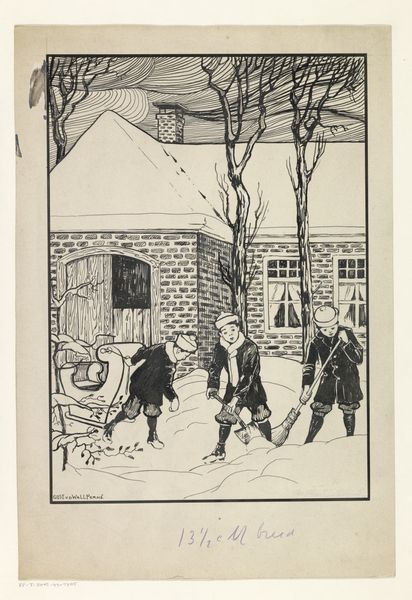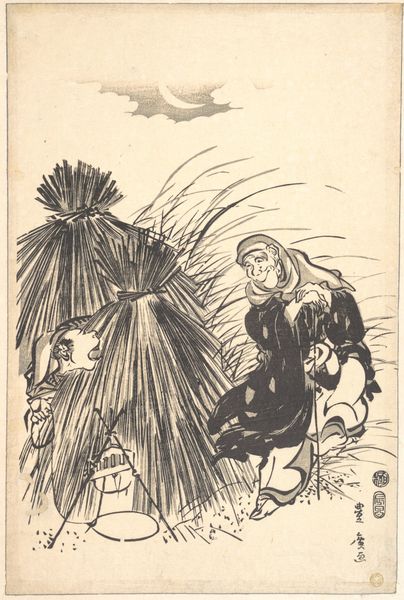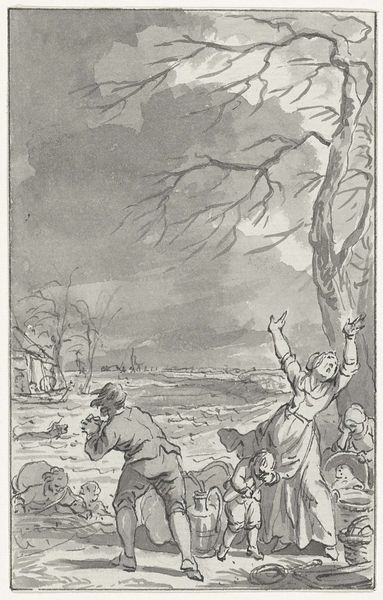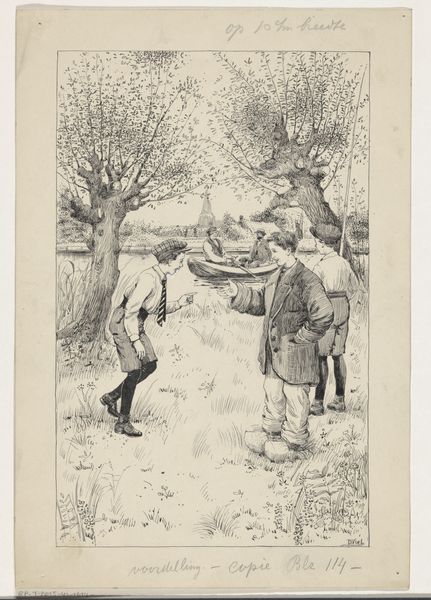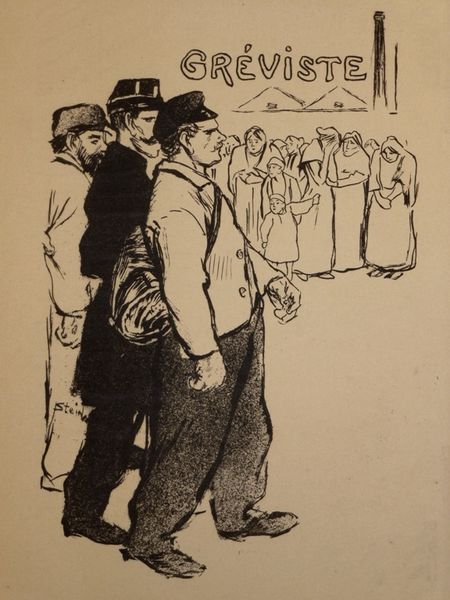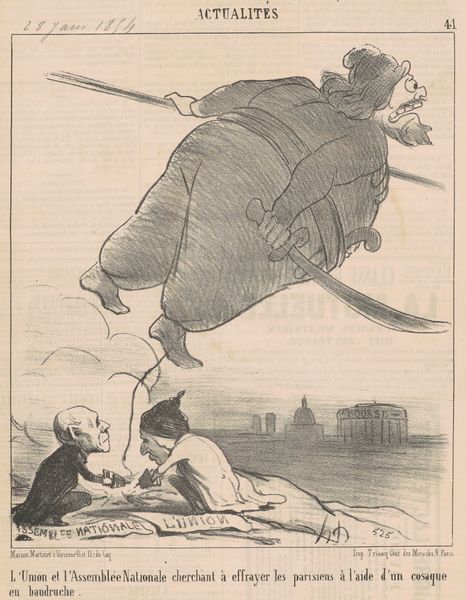
drawing, ink, pen
drawing
narrative-art
pen illustration
landscape
figuration
ink
line
pen
Dimensions: height 320 mm, width 268 mm
Copyright: Rijks Museum: Open Domain
Curator: Nelly Spoor's 1917 ink and pen drawing, titled "Scouts rennend achter een bepakte paardenkar," depicts a group of young boys chasing after a horse-drawn cart. Editor: My first impression is the frenetic energy—it captures the fleeting movement of childhood wonderfully with its sparse lines. The way the figures are almost bursting off the page feels very immediate. Curator: It's fascinating to consider this piece within the context of Spoor's wider body of work. She often centered narratives around childhood experiences and the societal structures that framed them. The boys’ pursuit, their uniforms… Editor: Uniforms are key. Considering that it’s 1917, during the First World War, the material aspect – the availability of fabric for these scout uniforms - is also important, especially with rationing going on at the time. What did scouting signify in this socio-economic landscape? Curator: It certainly spoke to ideals of masculinity and national identity being constructed during wartime, where movements for young boys focused on instilling discipline and patriotism. And consider the implied class dynamics: Who had access to scouting, the time, and the resources for their children? Editor: Exactly! It’s also relevant to see how Spoor, as a female artist, negotiates depicting these emerging masculine ideals and activities. Was she celebrating scouting as beneficial training for boys, or offering a subtle critique of this gendered socialization? The use of pen and ink also suggests particular choices of accessible materials. Curator: I find it striking how she uses the technique of hatching to build a real sense of motion. This creates dynamism to show the figures of the boys to seem alive, energetic as they move after this symbol of burden or the supply line behind the heavy wagon. What the figures chase in the drawing, the supply and provision from the rear mirrors what they will defend later, as fully armed men. Editor: A constant circulation of value. Thinking materially, one also must appreciate the labor involved in not only producing this drawing – the artist’s hand, eye, and time spent applying ink on paper - but also the obscured hands it represents. Curator: Yes, the invisible hands. Whether those loading the cart, creating the uniforms, or driving the narrative about scouts in the war, its visual absence evokes their labour all the same. Editor: This exploration really shifted my perspective on this piece. It seemed simple, capturing the youthful pursuit, yet it invites so many probing reflections now. Curator: Exactly. And, by unveiling some of these latent issues and symbolism within Spoor’s choices, we get a wider view not just of the piece, but also its relevance for considering social-historical dynamics of gender roles today.
Comments
No comments
Be the first to comment and join the conversation on the ultimate creative platform.
